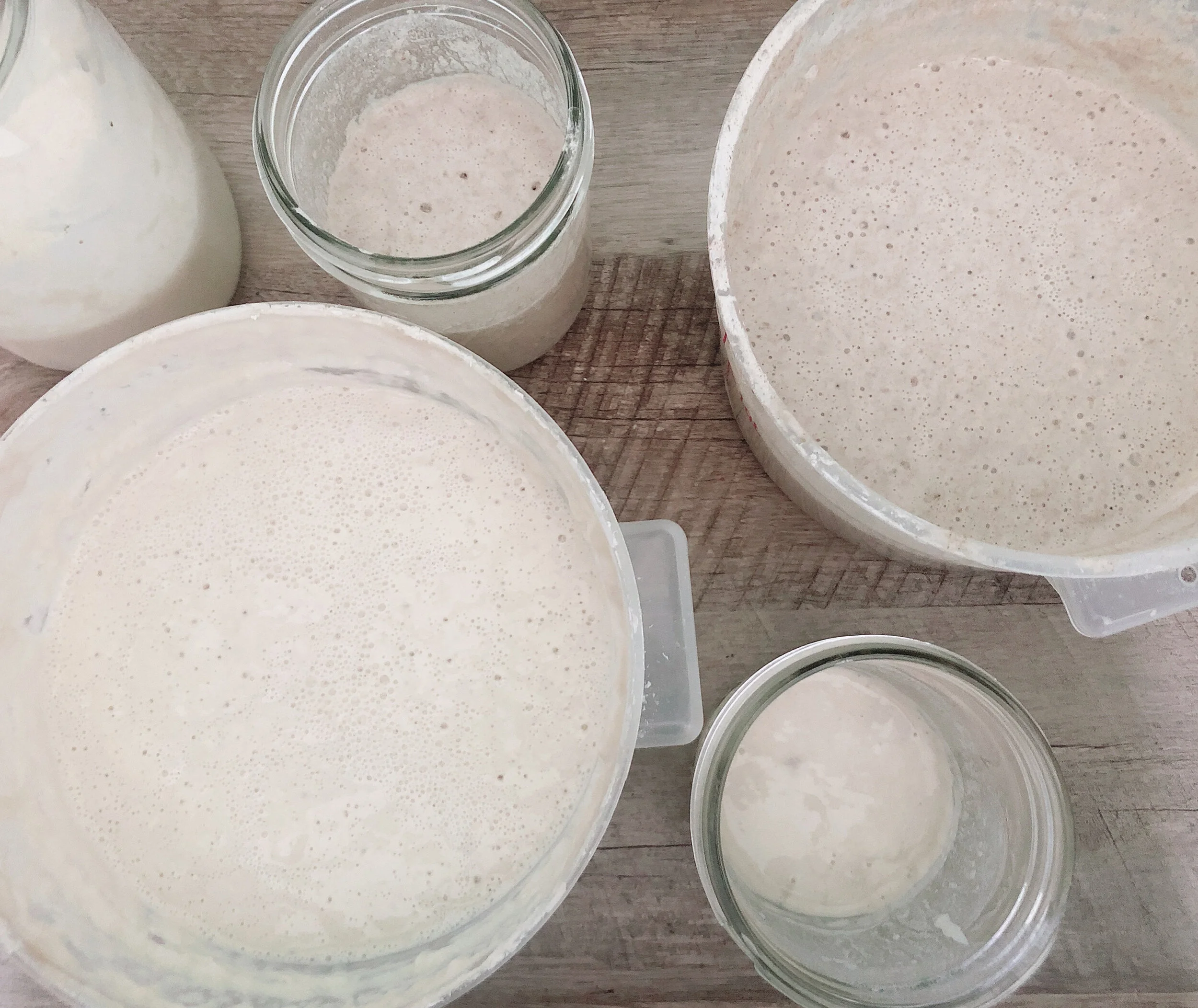Why Sourdough?
It’s the oldest form of naturally leavened bread, dating back to 3500 BCE.
Sourdough is one of the most unprocessed breads we can eat.
It’s good for gut health and easier to digest than other breads.
The 36-48 hour fermentation process helps us absorb more nutrients, and won’t leave you in a food coma.
Research suggests sourdough is lower in gluten than commercially made bread.
What is Sourdough?
Sourdough is bread made through the process of natural leavening –so no commercial yeast, artificial additives, or processing aids.
Wild bacteria and yeast found in the atmosphere cling onto the simple dough and create fermentation. Our fermented dough, or sourdough starter (named Trisha) is the backbone of all our bread and pizza and acts as our “wild yeast.”
Real sourdough bread is only FLOUR, WATER, and SALT. Not to mention lots of time and love.
The Science behind sourdough
Once flour, water, and salt mix, starch molecules break down into natural occurring sugars.
Wild yeast from our starter, along with friendly bacteria in the air called lactobacilli start to feed off the sugars.
The wild yeast creates lactic acid which creates the mildly sour taste in sourdough.
During fermentation, the yeast turns into carbon dioxide, creating bubbles which helps raise the dough, create a spongey texture, and create air pockets in the crumb.
